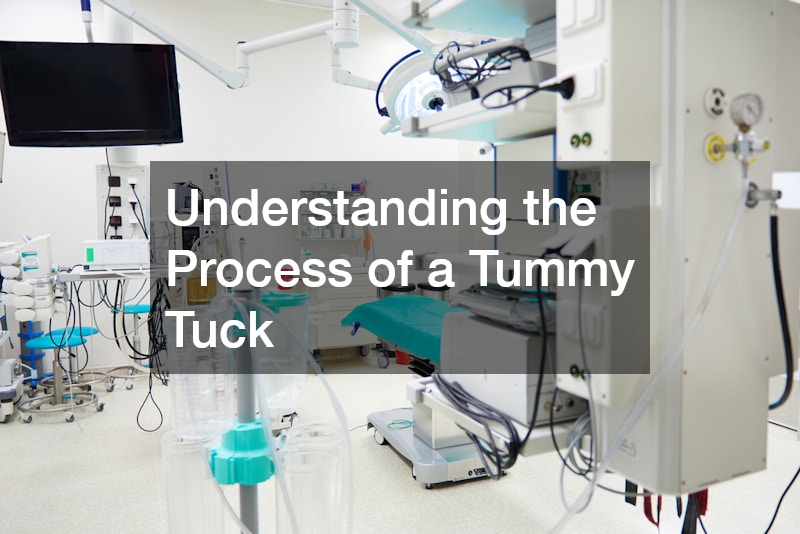
This section will provide an overview of the tummy tuck, an increasingly popular cosmetic procedure. Many individuals seek this surgery to enhance their appearance and confidence.
Before considering a tummy tuck, it is vital to understand the procedure thoroughly.
The increasing demand for tummy tucks reflects a broader cultural trend towards aesthetic enhancement. Such procedures can be life-changing for those who struggle with body image issues. A comprehensive understanding is essential to make an informed decision about undergoing surgery.
What is a Tummy Tuck?
Definition and Purpose
A tummy tuck, or abdominoplasty, is a surgical procedure aimed at removing excess skin and fat from the abdomen. The primary goal is to improve the appearance and contour of the abdominal region. Patients often seek out this surgery following significant weight loss or pregnancy.
Beyond cosmetic benefits, a tummy tuck can restore weakened or separated muscles. This can significantly improve posture and physical comfort. It also addresses issues related to stretched skin that cannot respond to exercise or diet changes.
Types of Tummy Tucks
There are several types of tummy tuck procedures tailored to patient needs. The full tummy tuck is the most comprehensive, involving a hip-to-hip incision and muscle repair. For those needing less extensive correction, a mini tummy tuck may suffice, involving a smaller incision.
An extended tummy tuck addresses areas beyond the abdomen, such as the flanks and back. This is suitable for patients who have experienced significant weight changes. Each type of tummy tuck varies in complexity, recovery time, and results.
Who is an Ideal Candidate?
An ideal candidate for a tummy tuck is one who is in good overall health and maintains a stable weight. Candidates should have realistic expectations and understand the commitment involved in recovery. They are typically individuals who wish to address loose skin and muscle separation.
Non-smokers are preferred due to better healing prospects and reduced risks of complications. It’s essential for potential candidates to have a clear understanding of what the surgery can and cannot achieve. Emotional preparedness is equally important as physical readiness.
How Does the Tummy Tuck Procedure Work?
Pre-operative Preparations
Patients must undergo several steps to prepare for a tummy tuck. Initial consultations involve discussing medical history and desired results with the surgeon. Routine medical tests ensure the patient is fit for anesthesia and surgery.
Patients receive detailed pre-surgery instructions to enhance safety and outcomes. These may include dietary restrictions, cessation of certain medications, and arrangements for post-surgery care. Adherence to these pre-operative guidelines is crucial.
Surgical Steps
The tummy tuck surgery begins with the administration of anesthesia to ensure patient comfort. The surgeon then makes incisions, the design of which depends on the type of tummy tuck being performed. Through these incisions, the surgeon can remove excess skin and tighten the abdominal muscles.
In some cases, liposuction may be employed to enhance the contouring of the abdomen. Once the desired changes are made, the incision is closed with sutures. The procedure’s duration varies based on complexity, typically taking several hours.
Post-operative Care
After the surgery, patients enter the critical phase of recovery. They need to follow a regimen of rest, medication, and limited physical activity. Understanding post-operative instructions is vital to prevent complications and facilitate healing.
Swelling and discomfort are common but can be managed with prescribed medications. Wearing compression garments helps support the abdomen and reduce swelling. Regular follow-up appointments are necessary to monitor healing progress.
What are the Risks and Benefits?
Potential Benefits
The key benefit of a tummy tuck is the dramatically improved abdominal contour. Patients often experience increased self-esteem and confidence post-surgery. This procedure can also alleviate discomfort from excess skin and strain on abdominal muscles.
Some patients notice better posture and reduced back pain due to strengthened core muscles. Additionally, fitting into clothes more comfortably is a notable positive outcome. These benefits collectively contribute to an enhanced quality of life.
Risks and Complications
As with any surgical procedure, tummy tucks come with inherent risks. Complications can include infection, bleeding, and adverse reactions to anesthesia. Scarring, although minimized, is an inevitable part of the healing process.
Other potential risks are fluid accumulation under the skin and changes in skin sensation. Rarely, patients may experience prolonged swelling or unsatisfactory results requiring revision surgery. Awareness of these risks allows for informed consent prior to surgery.
This comprehensive overview emphasizes the importance of informed decision-making before undergoing a tummy tuck. Being knowledgeable about the procedure, risks, and requirements helps ensure a successful surgical experience. The commitment to recovery and lifestyle changes is essential for optimal and enduring results.
.




